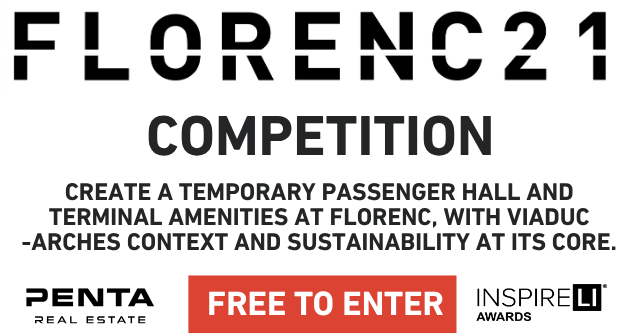The area of family farming today in the Orava region
Idea projektu
Projekt predpokladá modernú reinterpretáciu tradičnej oravskej usadlosti prostredníctvom modulárnej, svojpomocne postavenej architektúry s koreňmi v kultúrnej pamäti. Jeho cieľom je znovu prepojiť vidiecke bývanie s historickými typológiami a zároveň reagovať na dnešné sociálne, ekonomické a ekologické výzvy. Návrh, ktorý je organizovaný okolo mriežky 5 × 5 m a navrhnutý na postupné rozširovanie, integruje obytné, poľnohospodárske a skladovacie funkcie do jedného uceleného a flexibilného systému. Použitím jednoduchých, odolných materiálov - betónových stĺpov, drevených rámov a tradičných sedlových striech - návrh zabezpečuje cenovú dostupnosť a jednoduchosť výstavby, čím umožňuje užívateľom podieľať sa na stavebnom procese. Každá konštrukcia je prispôsobená svojej funkcii, ale zároveň zjednotená prostredníctvom proporcií, rytmu a formy odvodenej z ľudového dedičstva. Pozornosť sa venuje udržateľnosti prostredníctvom pasívnych stratégií, zelených striech a systémov hospodárenia s vodou, ktoré podporujú nízky vplyv na životné prostredie a odolnosť vidieckej krajiny. Tento projekt ponúka škálovateľný model revitalizácie vidieckych komunít pri zachovaní architektonického jazyka regiónu, ktorý spája minulosť a budúcnosť rozvoja vidieka.
Popis projektu
V kontexte meniacich sa vidieckych ekonomík a zanikajúcich miestnych tradícií tento projekt navrhuje nový typ statku, ktorý spája minulosť a budúcnosť života v oravskom regióne. Namiesto romantizovania tradície destiluje jej podstatu - jednoduchosť konštrukcie, priestorovú úspornosť, spojenie s pôdou - a tieto vlastnosti reinterpretuje prostredníctvom modulárnej, prispôsobivej architektúry. Návrh sa sústreďuje na štrukturálnu mriežku, ktorá umožňuje postupný rozvoj, nízkoenergetické stavebné metódy a rast riadený používateľmi, vďaka čomu je prístupný a odolný. Budovy sú zámerne skromné, ale bohaté na odkazy na ľudové formy - drevené obklady, strmé sedlové strechy a jednoduché proporcie vytvárajú rozpoznateľnú identitu zakorenenú v mieste. Ich funkčnosť vyplýva z jasného zónovania: bývanie, hospodárenie a skladovanie sa prelínajú cez pozemok v kompaktnom, ale rozšíriteľnom rámci. Architektúra nie je statická - je to systém možností, otvorený transformácii v priebehu času podľa toho, ako sa vyvíjajú potreby. Opätovným prepojením architektúry s praktickou výrobou, sebestačnosťou a kultúrnym kontextom sa projekt stáva niečím viac než len stavebným návrhom. Je to vízia, ktorá umožňuje komunitám získať späť autorstvo nad svojím životným prostredím - s použitím jazyka ich vlastnej krajiny.
Technické informácie
Tento projekt predstavuje súčasnú modulárnu poľnohospodársku usadlosť na Orave na Slovensku, ktorá integruje tradičné vidiecke hodnoty s modernými stavebnými technikami. Konštrukčný systém je založený na rastri 5 × 5 metrov, pričom sa používajú kruhové železobetónové stĺpy (Ø 400 mm) ako primárne podpery pre strešnú konštrukciu s dreveným rámom. Architektúra vychádza z miestnych archetypov - dlhých, úzkych objemov so strmými sedlovými strechami so sklonom 50° - realizovaných s použitím jednoduchých a odolných materiálov, ako sú drevené krokvy a obklady z trapézového plechu. Vonkajšie steny sú obložené vertikálne montovanými smrekovými doskami, ktoré odkazujú na regionálne ľudové techniky a zároveň zabezpečujú odolnosť voči klimatickým vplyvom a vizuálnu jednotu. Každá budova plní v rámci farmy špecifickú funkciu - obytné jednotky, prístrešky pre zvieratá, sklad sena a prístrešky na vybavenie - usporiadanú v jasnej priestorovej hierarchii. Modulárny systém umožňuje budúce rozšírenie pridaním stavebných segmentov bez narušenia formy alebo funkčnosti. Všetky stavby sú podopreté na železobetónových doskách, ktoré ponúkajú pevný kontakt so zemou a prispôsobivosť rovinatému terénu. Interiéry zostávajú skromné a užívateľsky orientované, uprednostňujú miestne materiály a stavebné postupy prístupné samostaviteľom. Z environmentálneho hľadiska návrh uprednostňuje stratégie s nízkym dopadom: systémy zelených striech zlepšujú tepelnú rovnováhu a zadržiavanie dažďovej vody, zatiaľ čo na mieste sa nachádzajú infiltračné zóny dažďovej vody, filtračné komory a retenčné nádrže na riadenie hydrologických pomerov na mieste. Prostredníctvom minimálnych, ale premyslených detailov architektúra vyvažuje kultúrnu identitu, praktickú stavebnú logiku a súčasné zásady udržateľnosti - poskytuje opakovateľný, sebestačný model vidieckeho bývania, ktorý má korene v dedičstve Oravy.
Projekt odovzdaný
16. 06. 2025Štítok
Rady študentom


